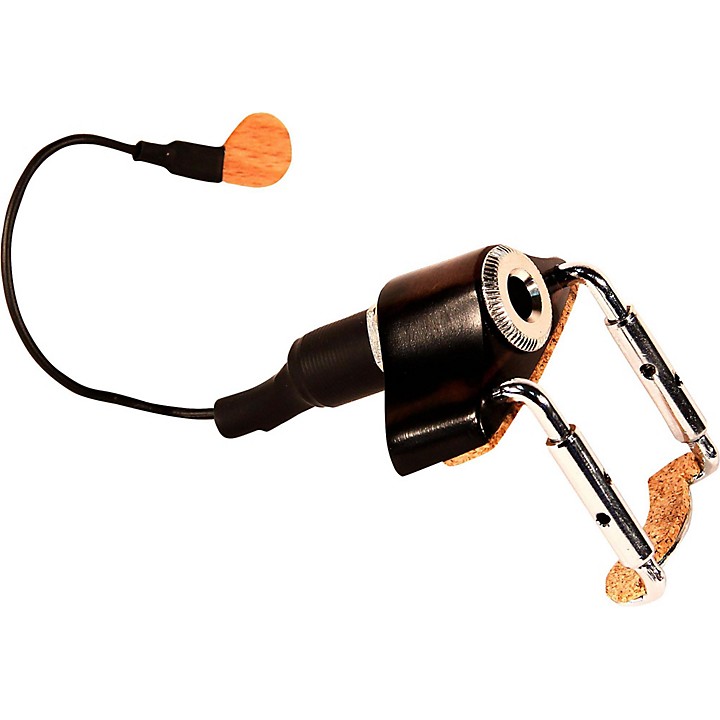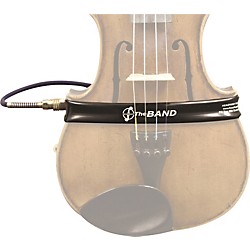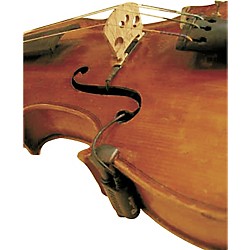October 19, 2015
Violin Pickups: What Are They & Do I Need One?


If you’ve been playing the violin for a few years and are beginning to experiment with your playing, you may have come across violin pickups in music stores and while browsing online. For most violinists, the thought of installing and using a pickup is confusing, scary, and just plain weird. The good news is that they aren’t as complicated as they seem and there are a variety of brands, styles, and types for you to choose from. From understanding what a pickup does to being able to decipher the differences between the different types, Music & Arts is here to help.
What’s a Pickup?
Although pickups aren’t exclusive to the violin, for the sake of this article we will focus on pickups for the violin. Essentially, a pickup is a small device that attaches to your violin in the bridge area and converts physical vibrations into a digital signal. You can plug the pickup into an amp, and the sound of your violin is instantly elevated. Ideal for playing in venues where everyone else is amped, miked, and playing loudly, pickups help make your violin louder without sacrificing its sound. While playing into a microphone can work on occasion, pickups produce a better and more natural sound. If you plan on performing often, it’s best to purchase a pickup and avoid the mic altogether.


Temporary vs. Permanent Pickups
Pickups for bowed instruments, including the violin, can be divided into two main categories: permanent pickups and removable pickups. Since there are a few different types of removable pickups, we’ll save those for a different section and spend some time describing permanent pickups first. Permanent pickups actually integrate with the violin and provide a reliable amplification source that’s ready-to-go. If you have a violin that you can dedicate for performances, a bridge replacement pickup tends to be the best choice, as it offers great tone and hassle-free amplification every time you pick up your violin. This isn’t to say that violins with permanent pickups can’t still be played in acoustic settings. While violins with permanent pickups can be used acoustically, the presence of wires and an attached output jack might visually prohibit someone from performing the violin in front of an audience.
Although permanent pickups are priced relative to other pickup options, they will require professional installation, which should be factored into the price. For more information on pricing, contact your luthier. If you don’t know a luthier, your music teacher should be able to provide a recommendation.
Temporary Pickups
Temporary pickups, also known as removable pickups, operate in much the same way as permanent pickups. The only real exception is that they’re temporary and can be removed as needed. These types of pickups are ideal for someone who only has one violin, and prefers not to have wires and the output jack present at all times. In most cases, non-professional violinists use temporary pickups. As mentioned, there are several types of removable pickups, and we’ll go a little bit further into each below.
-
- Bridge mounted: As you probably could have guessed, bridge mounted pickups are mounted on the bridge of your violin. They are quick to install and remove, and provide a better, stronger, and more reliable tone than pickups advertised as “easy fit”.
- Under-the-bridge: Since under-the-bridge pickups collect vibrations from both the bridge and the top of the instrument, the sound produced is well-rounded. Although they aren’t permanent pickups, installation and removal can be tricky so many musicians end up leaving them on most of the time.
- Clip-on microphones: While clip-on microphones are technically a microphone and not a pickup, we’ll include them on this list for good measure. They’re easy to install and remove but, since they’re mics, have two main drawbacks: mic direction and placement must be precise, and sound can be prone to feedback in loud playing environments.
- Contact microphones: Many violinists think of contact microphones as being the best of both worlds. They’re safe to install and easy to remove, even on expensive violins. The only drawbacks are typical of microphones in general: placement must be near-perfect and feedback can be an issue.


Do I Need One?
As explained above, pickups are usually only necessary if you perform in venues where other instruments are amplified. Just think about it: without any sort of amplification, how would your violin be heard over an electric guitar or the beat of drums? If you don’t plan on performing in front of an audience for a while, a violin pickup probably isn’t necessary. As always, your music instructor should be able to help you decide if purchasing a violin pickup makes sense for you and your playing style.






